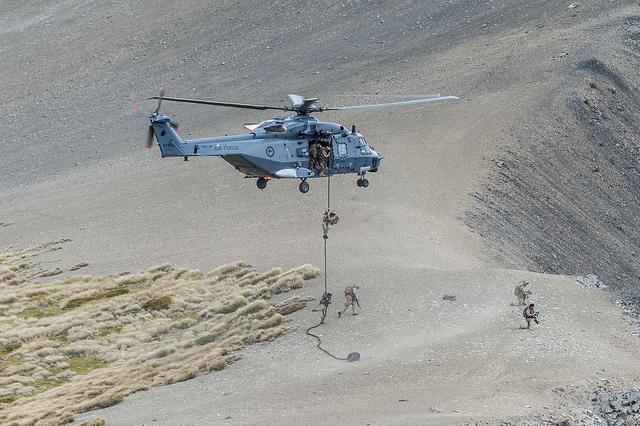
New Zealand’s new coalition government has just launched its strategic defence policy statement. The statement carries on many of the themes familiar from past defence policy papers while introducing a number of new priorities. In delivering those themes it makes for intriguing reading, shifting as it does from forthrightness to purposeful ambiguity.
The 2018 statement strongly asserts that New Zealand has ‘no better friend than Australia’ and that it’s ‘committed to responding immediately should Australia be subject to armed attack’. There’s an express emphasis on the ‘obligation’ to support a rules-based order.
However, some things are new. In place of discussions of ‘traditional partners’ or even ‘US alliance partners’, the statement specifically talks of partnership with the other parties to the UKUSA Agreement (known as the Five Eyes, which also includes the US, UK, Canada and Australia). This focus on the Five Eyes allows for some ambiguity when talking about New Zealand’s relationship with the US. (Indeed, what direct mention there is of the US in the statement is cautious, noting the withdrawal of US support for a range of multilateral initiatives while still describing US ‘support’ for regional peace and security.)
There’s also a degree of ambiguity in the claim that ‘world events dictate where the government may deploy the Defence Force at any given time’. Beyond non-negotiables, such as the defence of New Zealand and support for Australia and the South Pacific, it’s in this phrase that the government restates its right to discretion in making decisions to engage out of area. Interestingly, the statement asserts that partnerships ‘from the Five Eyes to NATO and the EU are vital to enabling the realisation of our interests, the promotion of our values and the safeguarding of our sovereignty’ and that the Middle East is a ‘critical theatre of operations’. The strength of the language used (‘vital’ and ‘critical’) could provide impetus for future engagements outside of traditional defence arenas and roles.
The statement identifies a range of ‘complex disrupters’, in which climate change and space and cyber capabilities are placed alongside terrorism as threats to security. Defence roles vis-à-vis climate change focus on humanitarian aid and disaster relief, and are similarly limited in support of efforts to counter terrorism or criminal activities. Most notable is direct recognition that New Zealand’s overall official capacity to engage in the space and cyber domains is underdeveloped. The statement constitutes a plea for the resourcing of new capabilities in those domains, though it seems to assume that this lies within the NZDF’s remit, rather than in a new agency or pan-agency entity.
The statement more explicitly notes whole-of-government relationships. There’s also an express labelling of the ‘Community’ role played by the NZDF. This has long been evident in practice—for example, in Defence’s highly visible post-disaster roles—but hasn’t had the same visibility in policy. The focus on ‘Community, Nation and World’ also emphasises the vastness of the range of potential roles for the NZDF. The call for combat-capable forces, interoperable with a number of ‘traditional and non-traditional’ partners, and trained and ready to respond to a range of other events, constitutes a heady wish list that could be difficult to sustain.
Unprecedentedly forthright language is also used to discuss China. There’s mention that defence relations have been strengthened, and that China is ‘deeply integrated into the rules-based order’. But it’s also noted that China ‘holds views on human rights and freedom of information that stand in contrast to those that prevail in New Zealand’ and ‘has determined not to engage with an international tribunal ruling’.
Useful ambiguity returns, however, in mentions of the risk to open societies of disruption to their political systems through foreign meddling, as well as in mentions of concern about others’ pursuit of spheres of influence. Indeed, this statement includes unprecedented mention of Russia, thereby (like the inclusion of the US under the broader rubric of the Five Eyes) providing a way to discuss concerns in a more generalised fashion.
Ambiguity and forthrightness walk hand in hand in this document, making for very interesting reading. Most interesting perhaps is the emphasis on space and cyber capabilities, in no small part because they could sit well with the New Zealand public if increasing those domestic capabilities can deliver more of the ‘independent foreign policy’ that New Zealanders believe they already have.